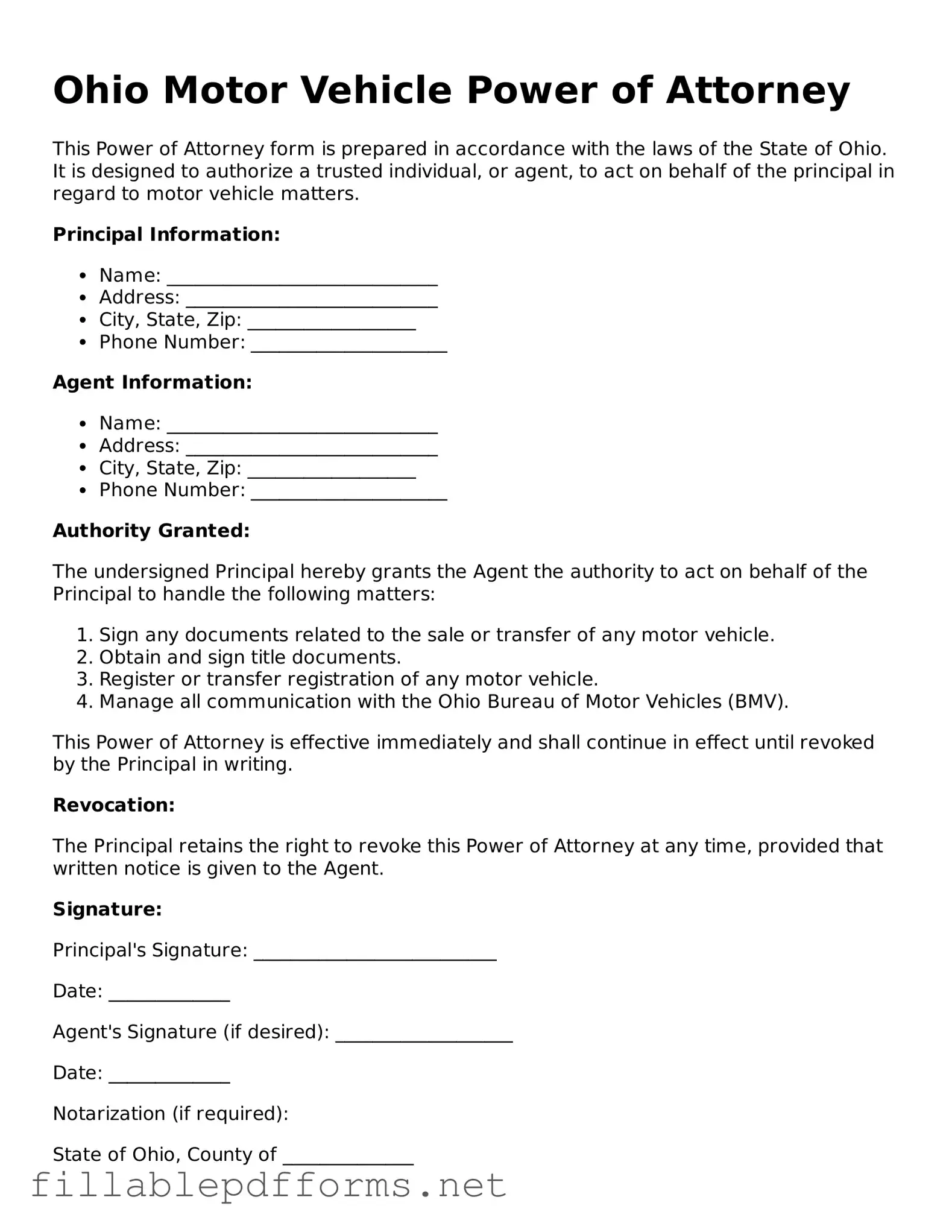Attorney-Verified Motor Vehicle Power of Attorney Form for Ohio State
The Ohio Motor Vehicle Power of Attorney form allows an individual to appoint someone else to handle specific tasks related to their vehicle. This can include signing documents, transferring titles, or making decisions regarding registration. By using this form, you ensure that your vehicle matters are managed by a trusted person when you are unable to do so yourself.
Launch Editor Here
